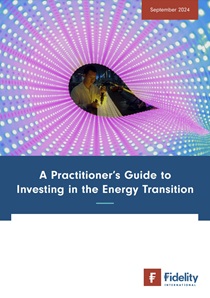Introduction from Jenn-Hui Tan, Chief Sustainability Officer
The challenge of constructing a carbon neutral economy – quickly – can seem so complex that it begs the question: where do you even start?
Investors face the same conundrum. The capital demand for funding the transition is eye-watering (USD $4 trillion every year to reach net zero by 2030, according to the United Nations).1 There is an overwhelming number of places to allocate portfolios as they pivot to decarbonise, and the benefits of different strategies is not always obvious. Global clean energy investment is now nearly twice that of fossil fuels, but it is still too slow to meet the goals of the Paris Agreement.2 Easing the way for investors is critical.
Doing so means re-configuring capital markets around a new, clear policy direction. It means rapidly evolving regulation and incentives across regions and competing economies. It means companies being transparent not only about their scope 1 emissions (those they are directly responsible for) but also their scope 3 – those produced throughout their value chains.
It means there’s a lot for investors to think about.
This guide aims to provide some clarity over what the transition means in practical terms as an investment theme. We look at the steps that can be taken to ensure portfolios keep pace with climate pathways. We confront some of the big hurdles in doing so, like choosing the right blend of strategies, or how certain hard-to-abate sectors and countries are managing their own daunting decarbonisation plans.
It explores the opportunities for investors too, including the materials from which green infrastructure is built and powered, spanning asset classes from equities to bonds to real estate. There is also the question of how different a successful transition might look across developed and emerging markets, and how the choices for investors in those regions can vary. In these pages you’ll find the best thinking from Fidelity International’s portfolio managers on where and when specific allocations make sense.
Underpinning all these ideas is the direction set by policymakers. Private investment can do its part, but what is becoming abundantly clear – and is echoed by our global team of analysts here – is that the energy transition must be driven from the top. There has been some success with the heavy investment ushered in by the Inflation Reduction Act in the US and the regulatory wave precipitated by the EU’s Green Deal. But these initiatives stand in contrast to confused or weaker policy signals elsewhere. For the most part there is still not enough focus on long-term economic incentives: it must make commercial sense for a company to change, and markets need assurance that regulation won’t waver.
Investors also need agreed scientific pathways against which they can measure company performance. Only then can they be confident that a particular activity is doing enough to mitigate transition and physical risks.
With that kind of direction, companies and nations can refine their own plans, highlighting the obstacles to their net zero targets. Progress then becomes self-reinforcing: the obstacles reveal where more policy and innovation are needed, government action clears the way and bolsters those markets.
What you’ll find in these articles is informed by the latest details to have emerged from climate financing frameworks and taxonomies. It follows developments that underline the energy transition as a vital trend for investors, such as Japan’s recent leadership in transition finance, or signs that China may commit to a more ambitious cut in its emissions on the back of its huge renewables rollout. And, of course, there’s the advancements in technology which continue to broaden the scope of companies, themes, and commodities that investors can include in low-carbon portfolios.
The energy transition is a topic of phenomenal scale. We hope this guide helps bring it down to size.
1 Five ways to jump-start the renewable energy transition now | United Nations
2 World Energy Investment 2024 | IEA
Download the full paper
